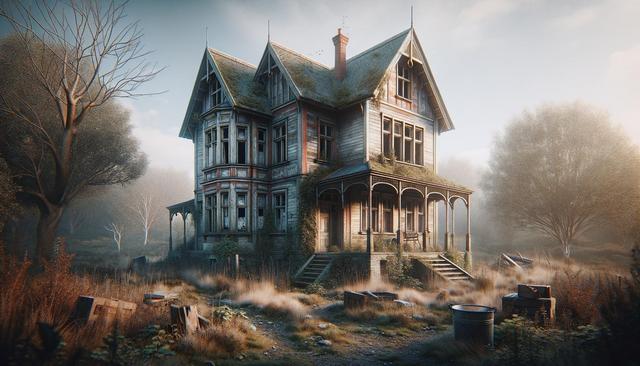What Causes a House to Become Abandoned?
There are many reasons why a house may end up abandoned. Financial hardship is one of the most common factors. When homeowners can no longer keep up with mortgage payments or property taxes, they may be forced to vacate, leaving the property empty. In some cases, houses are left behind after natural disasters or when owners pass away with no next of kin to claim the property. Urban migration and shifts in local economies also contribute to property abandonment. For instance, when industries close or jobs disappear, entire communities may relocate, leaving behind vacant homes. Other contributing issues include legal disputes, unclear ownership, or long-term neglect.
Understanding why a house has been abandoned is often the first step in determining what can be done with it. For potential buyers, real estate investors, or community developers, this history can provide insight into the challenges and opportunities a property presents.
The Legal and Structural Status of Abandoned Houses
When a house is abandoned, its legal status can become complicated. Local governments may place liens on the property for unpaid taxes or violations, and determining the rightful owner may involve navigating probate courts or conducting title searches. These legal entanglements can delay any attempts to rehabilitate or sell the property. In addition to legal concerns, the structural integrity of an abandoned house is often compromised. Years of neglect can lead to issues such as:
- Water damage due to leaking roofs or broken pipes
- Mold and pest infestations
- Foundation problems from shifting soil or erosion
- Vandalism or theft of fixtures and valuable materials
Before moving forward with refurbishing an abandoned house, it’s essential to conduct a thorough inspection and consult with professionals who can assess the condition of the structure and offer guidance on necessary repairs.
Community Impact and Neighborhood Decline
Abandoned houses have a noticeable effect on their surrounding communities. They can become eyesores and magnets for criminal activity, contributing to a decline in neighborhood property values and safety. Vacant buildings often lead to a sense of neglect, which can discourage new homeowners or investors from considering the area. However, communities can also rally around the revitalization of these properties. Local governments and nonprofits sometimes offer programs to encourage people to reclaim and restore abandoned homes. These initiatives may include:
- Tax incentives for rehabilitation
- Grants or low-interest loans
- Partnerships with housing organizations
- Community clean-up or beautification projects
By addressing the presence of abandoned houses, communities not only improve aesthetics but also foster a renewed sense of pride and safety among residents.
Transforming Abandoned Houses into Livable Spaces
Breathing new life into an abandoned house requires a blend of vision, planning, and resources. It begins with determining whether the property is salvageable and what repairs or renovations are needed. Depending on the condition, this might mean anything from cosmetic updates to full-scale structural overhauls. Successful transformations often follow a strategic process:
- Securing permits and resolving legal matters
- Creating a renovation plan and budget
- Hiring qualified contractors and specialists
- Restoring utilities and addressing safety concerns
The transformation process can be time-consuming, but the rewards often outweigh the effort. Restored homes not only provide comfortable living spaces but also contribute to the overall revitalization of the neighborhood. In some cases, these projects can also serve as examples of sustainable development, especially when restoration incorporates energy-efficient upgrades or reclaimed materials.
Opportunities for Real Estate Investment
For real estate investors, abandoned properties represent unique opportunities. They are often available at a significantly lower cost than market-rate homes, especially when purchased through auctions, land banks, or foreclosure sales. With the right approach, investors can turn these properties into income-generating assets, whether through resale, rental, or conversion into multi-family dwellings. However, investing in abandoned houses is not without risk. Key considerations include:
- Understanding local zoning and housing codes
- Accurately estimating renovation costs
- Anticipating potential delays due to permits or legal clearances
- Evaluating neighborhood trends and market demand
Experienced investors often work with local contractors and real estate professionals to navigate these challenges. In addition to financial returns, many investors find value in contributing to community improvement and housing availability through their efforts.
Conclusion: Reclaiming Value from What Was Left Behind
Abandoned houses might seem like relics of the past, but they offer real potential for those willing to invest time and thought into their revival. Whether you are a prospective homeowner, community advocate, or investor, these properties can be more than just empty buildings—they can be the foundation for renewed neighborhoods and revitalized communities. By understanding the causes, challenges, and opportunities associated with abandoned homes, individuals and groups can make informed decisions that lead to lasting, positive change.




Leave a Reply